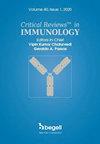利用多色熔融曲线分析快速识别支气管扩张患者的非结核分枝杆菌:2018-2022年中国福州地区肺科医院的一项研究
IF 0.9
4区 医学
Q4 IMMUNOLOGY
引用次数: 0
摘要
非结核分枝杆菌(NTM)感染在支气管扩张症中很常见,其发病率在全球呈上升趋势。然而,中国对支气管扩张症患者非结核分枝杆菌感染的调查仍相对有限。本研究旨在确定和了解中国福州地区支气管扩张症患者的 NTM 特征。收集了2018-2022年福州地区281例疑似NTM感染的支气管扩张症患者的肺部样本。采用MPB64抗原检测对NTM进行初步评估。利用基因芯片和基因测序实现对NTM的进一步鉴定。在281例患者中,经MPB64抗原检测,172例(61.21%)患者为NTM阳性(58.72%),其中女性(58.72%)多于男性(41.28%),46-65岁年龄组发病率最高。通过多色熔解曲线分析(MMCA)和基因测序结果比较,共鉴定出 47 例 NTM 单一感染和 3 例混合感染(1 例复合结核分枝杆菌-M.细胞内分枝杆菌、1 例鸟疫分枝杆菌-M.细胞内分枝杆菌和 1 例脓肿分枝杆菌-M.细胞内分枝杆菌)。这两种方法都表明细胞内分枝杆菌(M. intracellulare)、脓肿分枝杆菌(M. abscessus)和禽分枝杆菌(M. avium)是影响支气管扩张症患者的主要非结核分枝杆菌。根据MMCA的数据,细胞内分枝杆菌和脓肿分枝杆菌在女性中的发病率高于男性,在46-65岁年龄组中发病率最高。这项研究为了解中国东南地区支气管扩张症患者中非典型肺炎霉菌的流行病学和临床特征提供了新的视角。值得注意的是,细胞内膜霉菌、脓肿膜霉菌和阿维菌被确定为主要的非淋菌性支气管扩张症病原体,这有助于更好地了解和治疗伴有非淋菌性支气管扩张症的支气管炎。本文章由计算机程序翻译,如有差异,请以英文原文为准。
Employing Multicolor Melting Curve Analysis to Rapidly Identify Non-Tuberculous Mycobacteria in Patients with Bronchiectasis: A Study from a Pulmonary Hospital in the Fuzhou District of China, 2018−2022
Non-tuberculous mycobacteria (NTM) infection is common in bronchiectasis, with rising incidence globally. However, investigation into NTM in bronchiectasis patients in China remains relatively limited. This work aimed to identify and understand the features of NTM in bronchiectasis patient in Fuzhou district of China. The pulmonary samples were collected from 281 bronchiectasis patients with suspected NTM infection in Fuzhou, 2018-2022. MPB64 antigen detection was employed for the preliminary evaluation of NTM. Further NTM identification was realized using gene chip and gene sequencing. Among 281 patients, 172 (61.21%) patients were NTM-positive (58.72%) according to MPB64 antigen detection, with females (58.72%) outnumbering males (41.28%) and the highest prevalence in the age group of 46-65 years. In total, 47 NTM single infections and 3 mixed infections (1 Mycobacterium tuberculosis complex-M. intracellulare, 1 M. avium-M. intracellulare, and 1 M. abscessus-M. intracellulare) were identified through multicolor melting curve analysis (MMCA), which was compared with gene sequencing results. Both methods suggested Mycobacterium (M.) intracellulare, M. abscessus, and M. avium as the primary NTM species affecting bronchiectasis patients. M. intracellulare and M. abscessus were more frequent in females than males with the highest prevalence in the age group of 46-65 years according to MMCA. This research provides novel insights into the epidemiological and clinical features of NTM in bronchiectasis patients in Southeastern China. Significantly, M. intracellulare, M. abscessus, and M. avium were identified as the major NTM species, contributing to a better understanding and management of bronchiectasis accompanied by NTM infection.
求助全文
通过发布文献求助,成功后即可免费获取论文全文。
去求助
来源期刊
CiteScore
2.60
自引率
0.00%
发文量
14
审稿时长
>12 weeks
期刊介绍:
Immunology covers a broad spectrum of investigations at the genes, molecular, cellular, organ and system levels to reveal defense mechanisms against pathogens as well as protection against tumors and autoimmune diseases. The great advances in immunology in recent years make this field one of the most dynamic and rapidly growing in medical sciences. Critical ReviewsTM in Immunology (CRI) seeks to present a balanced overview of contemporary adaptive and innate immune responses related to autoimmunity, tumor, microbe, transplantation, neuroimmunology, immune regulation and immunotherapy from basic to translational aspects in health and disease. The articles that appear in CRI are mostly obtained by invitations to active investigators. But the journal will also consider proposals from the scientific community. Interested investigators should send their inquiries to the editor before submitting a manuscript.

 求助内容:
求助内容: 应助结果提醒方式:
应助结果提醒方式:


